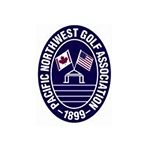Tougher For Whom: Or, You Can’t Compare Golf Course Difficulty from Slope Rating Alone!
A course with a Slope Rating of 135 is not necessarily more difficult than a course with a Slope Rating of 113. You can't compare a golf course's difficulty from the Slope Rating alone.
We'll give you a minute to let that sink in.
The key to understanding this concept is to get in the habit of figuring out what we call your Target Score. We’ve brought up Target Score before, illustrating the best you could shoot on a given set of tees depending on your handicap. This time, we will show Target Scores of two different golfers on two different courses.
Trust us, it doesn’t really involve much math, and is a pretty revealing exercise:
- Calculate your Course Handicap - your Handicap Index converted to the Slope Rating of the tees you will play for your round
-
Add your Course Handicap to the USGA Course Rating of that same set of tees
The result is the score you'll shoot if you play to your potential ability...your Handicap Index, and this is your Target Score; also known as 'predicted score'.
Now do the same for another set of tees, and compare the scores you came up with at the two different golf courses. It's easy now to come to a conclusion: the higher the Target Score, the tougher the golf course is for you.
It seems natural as golfers to want to note - and perhaps argue about - the similarities or differences regarding the difficulty of golf courses by looking at the Slope Ratings only, or the Course Ratings and Slope Ratings, side by side. Can you tell which course is tougher just looking at the numbers?
No!
You can't answer that question until you throw in: tougher for whom?
Let's compare two fictitious courses: Brook Hollow CC - 70.0/135 with Open Flats - 72.0/113. We can't do anything yet, because we need a golfer in the equation!
Bob has a Handicap Index of 5.2 – his Course Handicap is a 6 at Brook Hollow CC, so his Target Score is 76 (70.0 + 6 ). Bob's Course Handicap computes to a 5 at Open Flats so his Target Score is 77(72.0 + 5). For Bob, the course with the lower Slope Rating, Open Flats, is tougher.
Now let's look at Bob's friend Gary, who has a Handicap Index of 20.0. Gary's Course Handicap at Brook Hollow is 24, and his Target Score winds up to be a 94 (70.0 + 24), yet at Open Flats, his Course Handicap is a 20, and his Target Score is a 92 (72.0 + 20). For Gary, Brook Hollow happens to be the harder course.
Target Score helps us understand the most important word in the USGA Course Rating System: the word relative. Course Rating and Slope Rating as concepts by themselves might be hard to grasp, but become easier to apply when we know that they have meaning only in relation to each other, and in relation to your own game.








